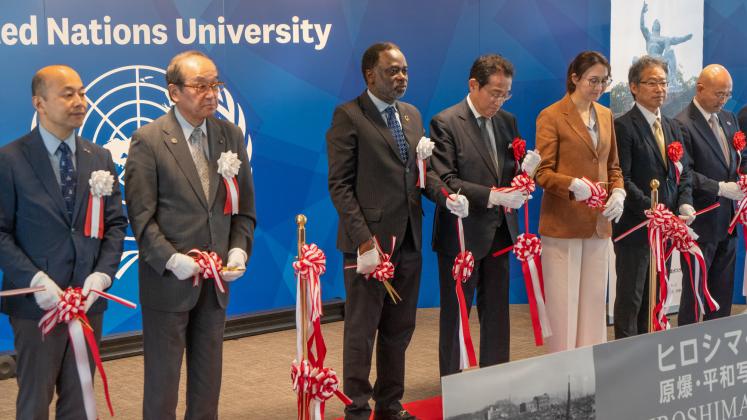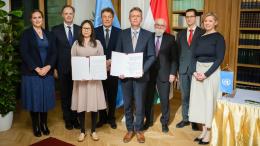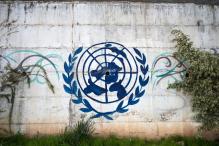On 11 July 2025, the United Nations University (UNU), in partnership with the cities of Hiroshima and Nagasaki, hosted the opening ceremony for “Exhibition for Peace: 80 Years Since the Hiroshima-Nagasaki Atomic Bombings”. Held at UNU headquarters in Tokyo, the event marked dual 80th anniversaries — the atomic bombings and the founding of the United Nations.
The ceremony began with remarks from UNU Rector Prof. Tshilidzi Marwala, who reflected on the significance of the exhibition: “Hiroshima was the first city in human history to experience the horrors of a nuclear weapon. Whether Nagasaki will be the last is up to us.”
The Mayor of Hiroshima Mr. Kazumi Matsui and the Mayor of Nagasaki Mr. Shiro Suzuki, expressed gratitude for the exhibition and emphasized the enduring human cost of the bombings. Mayor Suzuki noted: “Even those who barely survived suffered deep emotional and physical scars, and many are still suffering from post-radiation damage.” Both leaders voiced concern over the growing threat of nuclear weapons and reaffirmed their cities’ commitment to peace.
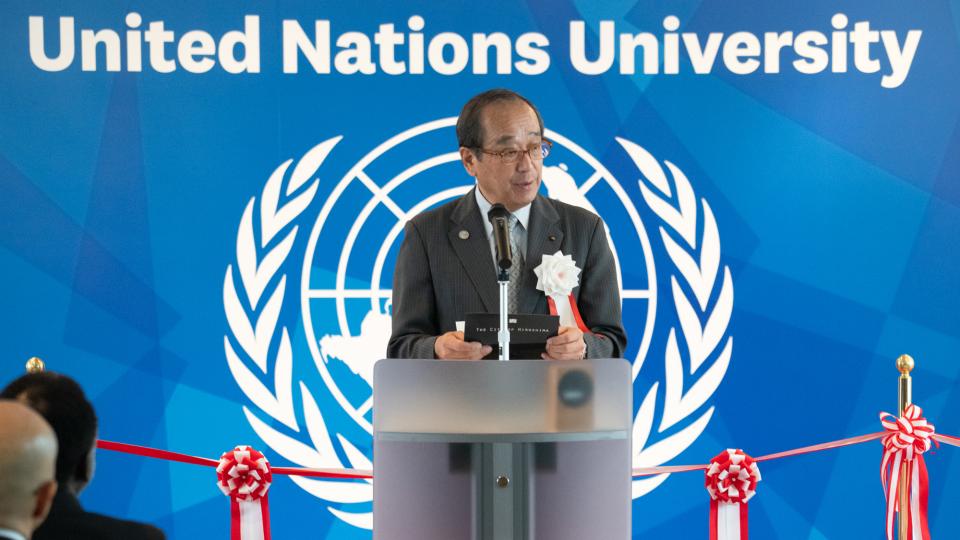
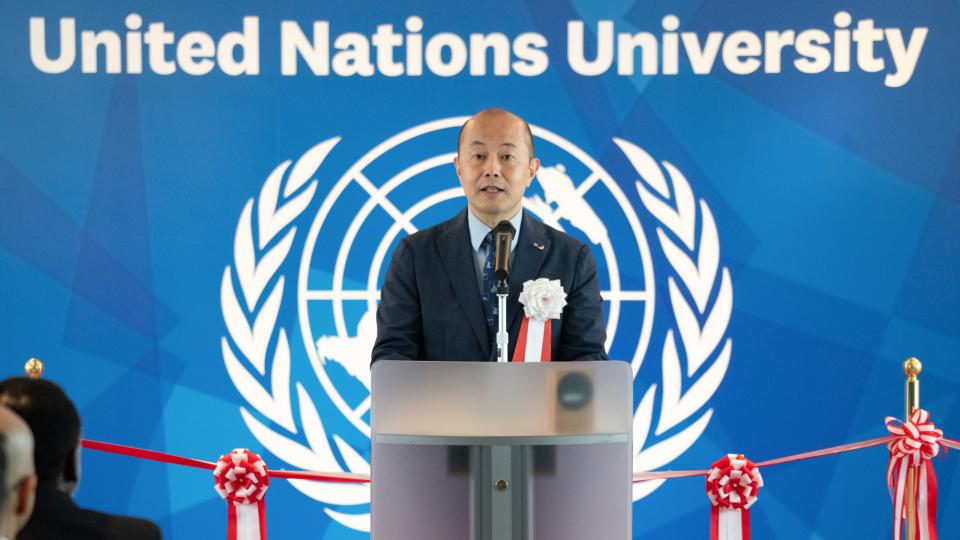
Mr. Fumio Kishida, former Prime Minister of Japan, Member of the House of Representatives and a long-time advocate for nuclear disarmament, spoke of Japan’s unique responsibility: “It is the mission of Japan to convey the reality of the atomic bombings across generations and borders, and to train young people to think and act for peace."
Echoing this message, Parliamentary Vice-Minister for Foreign Affairs Ms. Arfiya Eri emphasized Japan’s role in preventing future nuclear tragedies. Mr. Akio Fujiwara, Vice Minister of Education, Culture, Sports, Science and Technology, highlighted the importance of educating younger generations about peace and democracy, stating that the exhibition offers a vital opportunity to reflect on the past and envision a peaceful future.
Representing the diplomatic corps in Tokyo, H.E. Mr. Seiko Ishikawa, Ambassador of the Bolivarian Republic of Venezuela to Japan, called on the international community to uphold the principles of the United Nations: “Let us renew our determination to ensure such atrocities are never forgotten and never repeated."
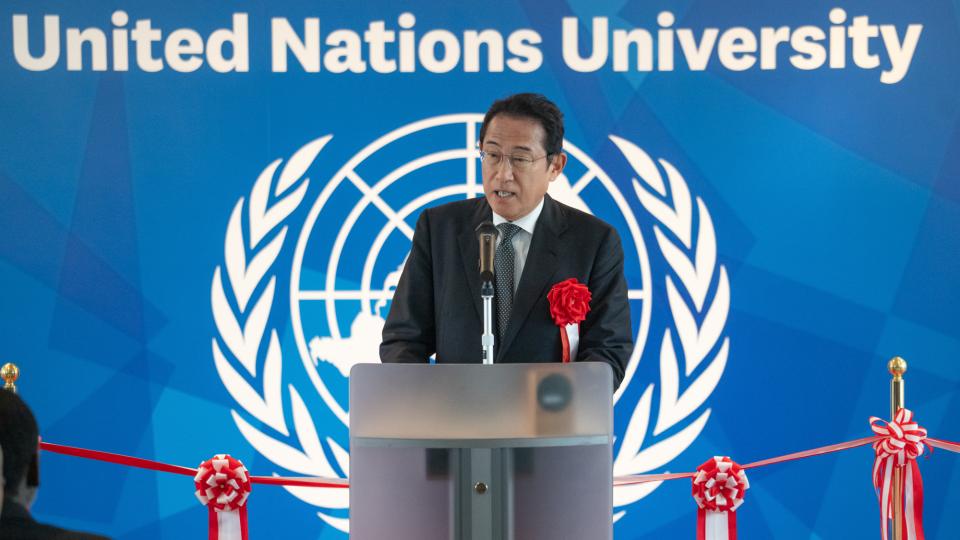
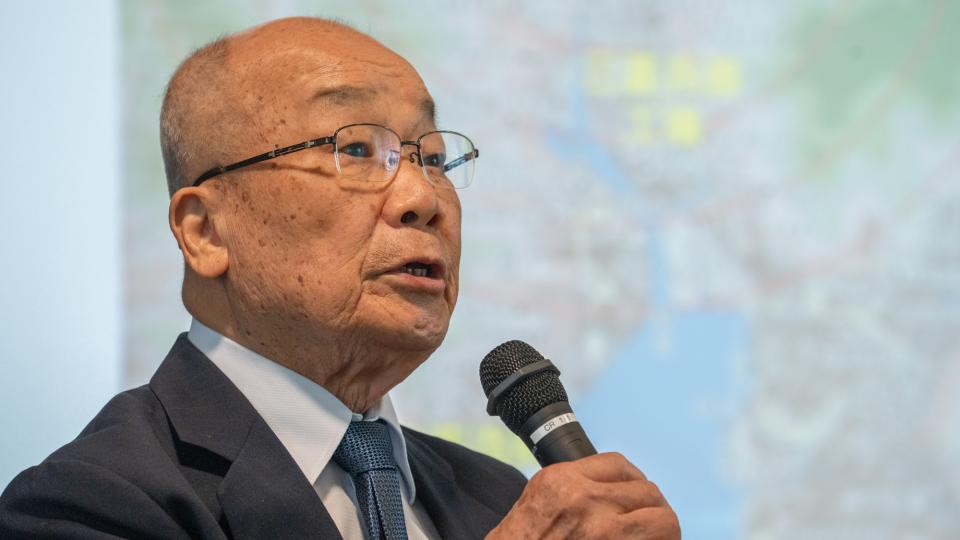
Following the speeches, dignitaries participated in a ribbon-cutting ceremony to officially open the exhibition.
A poignant moment came when Mr. Seiichiro Mise, a survivor of the Nagasaki bombing (known in Japan as Hibakusha), shared his personal story. Only 10 years old when the bomb fell, he recounted the trauma and lasting impact of that day: “Today’s story is not a tragedy that happened 80 years ago, but an ongoing story. We will continue to share our experiences so that the tragedy will never happen again.”
The “Exhibition for Peace" is open to the public until 17 August 2025. it features photographs and information on the devastation of the bombings, as well as current global efforts towards nuclear disarmament and peace.


